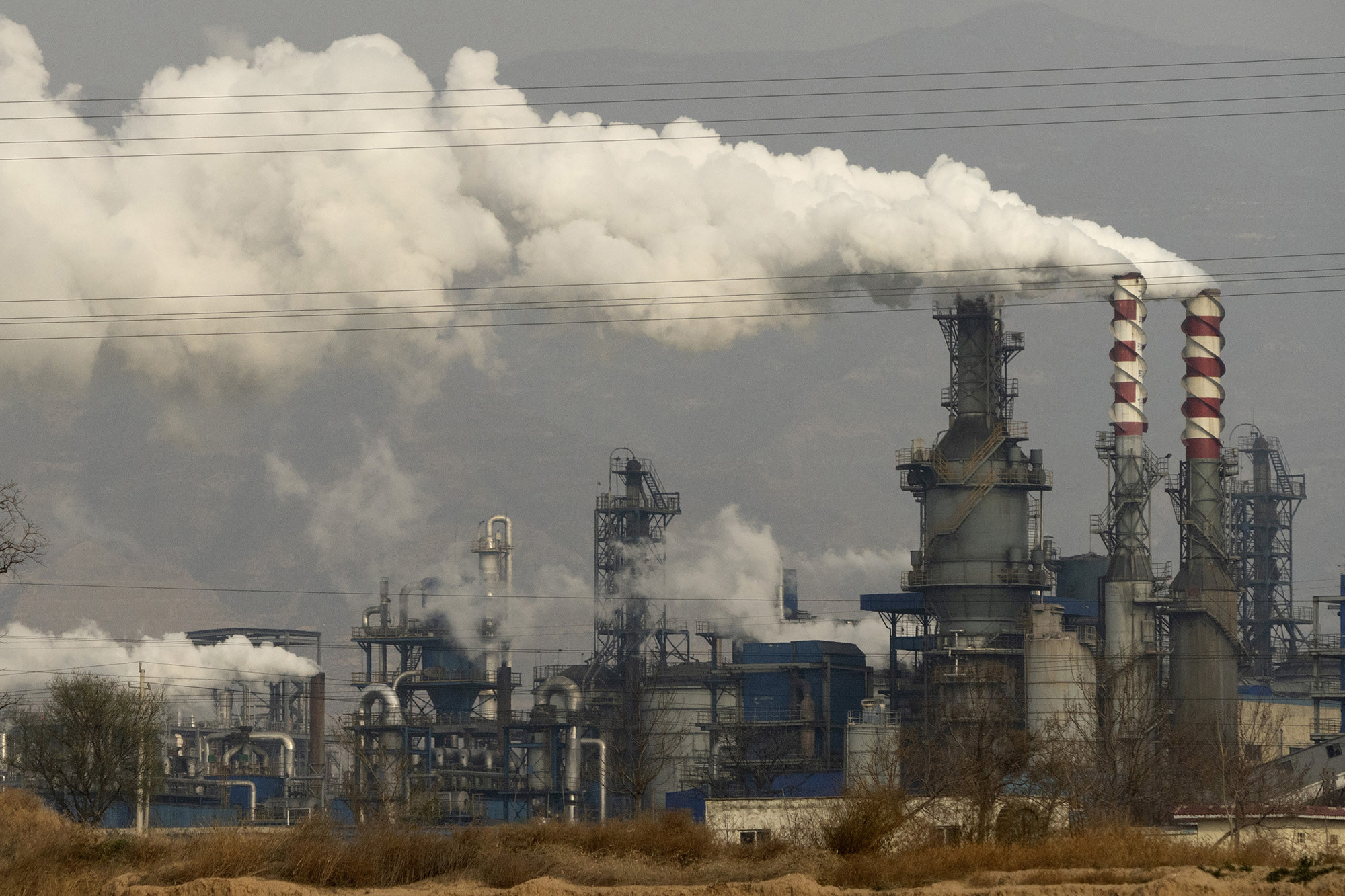
Climate change: More Chinese and Asian firms disclose greenhouse-gas emissions, but lag in reduction commitments, data quality
- Just 39 of the 100 largest listed Chinese companies disclosed 2020 financial-year carbon emissions, but this is up from three in 2015
- Emissions by Asia-Pacific companies fell just 1 per cent, compared to 11 per cent in North America, 14 per cent in Europe and 47 per cent in Latin America
More companies in China and Asia are making disclosures about their carbon footprints compared to five years ago, but the quality of the data they are providing, not to mention firm commitments to reducing greenhouse-gas emissions, are lacking, according to data compilers.
Too few of the region’s companies – among the planet’s biggest greenhouse gas emitters – have begun to reduce their emissions, let alone made firm commitments to drive them to zero. Moreover, even among those who have disclosed data, claimed reductions in emissions trail well behind counterparts elsewhere in the world.
This means extra corporate effort is needed to catch up with global ambition to contain global warming at 1.5 degrees Celsius above pre-industrial levels and avert disastrous climate-change consequences.
“The rule of thumb is that you need to reduce emissions by half this decade, or roughly 7 per cent annually from this year,” said Daniel Klier, the CEO of corporate sustainability data provider ESG Book. “We are not seeing that happening.”

Some 39 per cent of the 100 biggest listed Chinese companies by market capitalisation have disclosed 2020 financial-year carbon emissions from fossil-fuel combustion at their own facilities, as well as emissions attributed to their energy suppliers, according to ESG Book’s data. This is compared with 3 per cent in 2015.
For the largest 100 Asia-Pacific listed firms, the proportion has risen to 63 per cent from 49 per cent in the same period.
Still, the region trails behind the 88 per cent rate achieved by the top 100 firms in Europe and Russia, 87 per cent in North America and 66 per cent in Latin America.
Carbon-emission disclosures are not yet mandatory for firms listed in mainland China, but are either already compulsory or will soon become so in Europe, North America and many parts of Asia.
Among the firms that disclosed 2020 data, emissions by top Asia-Pacific companies have fallen by just 1 per cent since 2015, compared to an 11 per cent decline in North America, a 14 per cent fall in Europe and Russia and a 47 per cent reduction in Latin America.
China accounted for 30 per cent of global carbon-dioxide emissions in 2020, according to BP. Asia contributed just over half.
Companies globally are under pressure from regulators, investors and consumers to disclose and commit to cutting their carbon footprints.
Hong Kong finance sector works with universities to plug green talent gap
“In Asia, pressure on the supply chain is the biggest driver,” Klier said. “As Asia is the factory of the world, Western brands are turning to suppliers in the region for emission data.”
Some 3,879 firms in Asia-Pacific have disclosed their greenhouse-gas emissions, targets and planned climate actions to non-profit self-disclosure programme CDP last year, up 29 per cent from 2020. Almost one-third were first-time responders.
Just 7.5 per cent had net-zero targets and only 38 per cent had a low-carbon transition plan.
Around two-thirds have disclosed so-called “scope 1 and 2” emissions from fossil-fuel burning at their own facilities and those of their energy suppliers, but only 40 per cent have calculated at least one category of so-called “scope 3” emissions attributed to their supply-chain partners – typically business travel.
“Given that average scope 3 emissions total more than 11 times that of scope 1 and 2 combined, it is critical that businesses step up to measure their upstream and downstream value-chain emissions,” CDP said in a report this month.
China introduces guideline to encourage low-carbon behaviours among public
A high level of distrust exists around carbon-emission data because of a lack of transparency into how the reporting companies come up with the figures, Klier noted.
Many companies base their disclosures on estimation models rather than actual measurements. Elsa Pau, founder and CEO of BlueOnion, which runs a financial portal that tracks sustainability data of more than 40,000 companies and more than 300,000 funds, said no more than 5,000 companies are reporting “usable” carbon data worldwide.
“Regulators mandated asset managers to report climate-related risks and metrics, so there is no choice but to rely on estimated models,” she said, adding that typical data providers use estimated data for as much as 80 per cent of their coverage.
“Asset managers need to be convinced that the estimation models provide [sufficient] transparency and need to understand what factors were incorporated and why,” Pau said.
Efforts by the International Sustainability Standards Board to deliver a set of globally accepted standards on sustainability data by year-end should improve disclosure quality, Klier said.


